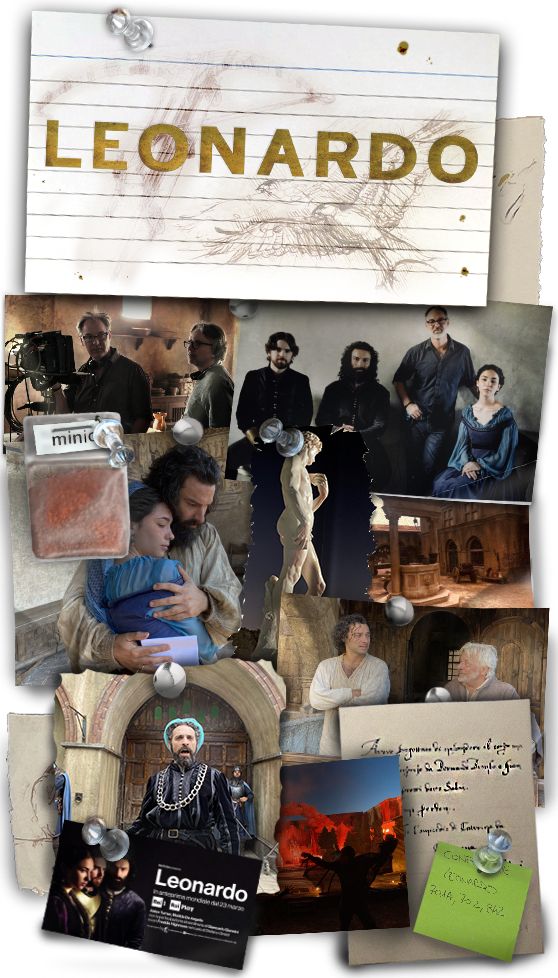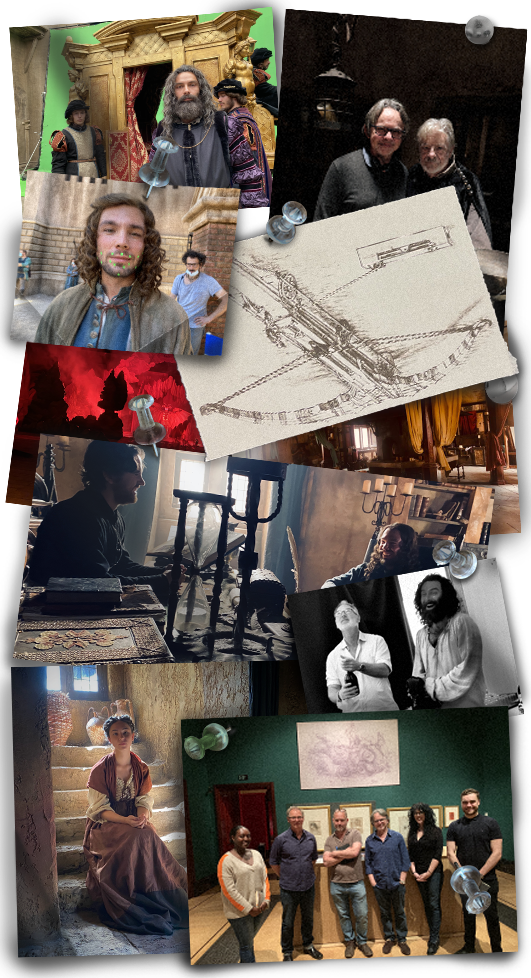In telling the story of Leonardo da Vinci, the first question my writing partner Steve Thompson and I faced was – Which story do we tell?
There was simply too much material. Here was a man who was curious about everything and extraordinarily accomplished at each endeavor he set his mind to – not just painting and sculpture, but anatomy, botany, astronomy, cartography, engineering and more. There was also, it turns out, not nearly enough. Even the most thorough biographies are riddled with massive holes in the historical record, leaving tantalizing and deeply frustrating questions not only about Leonardo’s work, but about every aspect of his life.
One decision was easy to make. Definitions of sexuality were different in Renaissance Florence, but same-sex relations between men were commonplace. To us, the records clearly indicated that Leonardo was gay and we were determined to depict him that way.
But Steve and I still faced a far greater challenge -- how to get at the human truth of such an incredible genius. Why was he so driven? What were the hidden threads woven through his life, revealing its pattern? To this day, historians cannot agree on an answer.
Being dramatists, of course, we understood the power of imagination. Rather than being frustrated by gaps in the historical record, we became fascinated by them, seeing each as a potential key to unlocking the mystery of who Leonardo really was.
Ultimately, we found our key on the bottom right corner of an obscure page in one of Leonardo’s journals. It was there that Leonardo listed six people important to him. All of the names were familiar, save one – a woman from the town of Cremona.
Women are frequently underwritten or omitted entirely from history, but we began to obsess about the woman from Cremona. While we’ll likely never really know who she was, here was our chance to ‘un-erase’ her from history and imagine why she meant so much to Leonardo. Our ‘hallelujah’ moment came when we discovered she was also likely the model for Leonardo’s greatest missing painting, Leda and the Swan. Some historians believe Leda may have been a greater painting than even Mona Lisa.
We asked ourselves questions to which history offers no answers: Why did Leonardo paint Leda? (We imagined a platonic love story between an artist and his muse.) Why did it disappear? (Now we had the makings of a proper mystery!) The woman from Cremona could not only reveal the truth of Leonardo’s character, but provide a narrative frame that would organise our entire story. We decided Leonardo would be a murder mystery, with Stefano Giraldi (Freddie Highmore) interrogating Leonardo (Aidan Turner) to prove he murdered his muse, Caterina da Cremona (Matilda de Angelis).
In our series, Giraldi’s character essentially stands in for the audience. We come to understand Leonardo’s life and work as he does, and while the solution to our mystery may be fictitious, it sheds genuine light on the truth of who Leonardo was. And who was he? For us, Leonardo is a man who values beauty and truth above all else. He embodies the very best of western civilisation – of what we so often fail, but should always strive, to value. Especially in an era of ‘fake news’ and distrust of science, Leonardo serves as a powerful reminder of ideals that we forget at our peril.
Cast:


